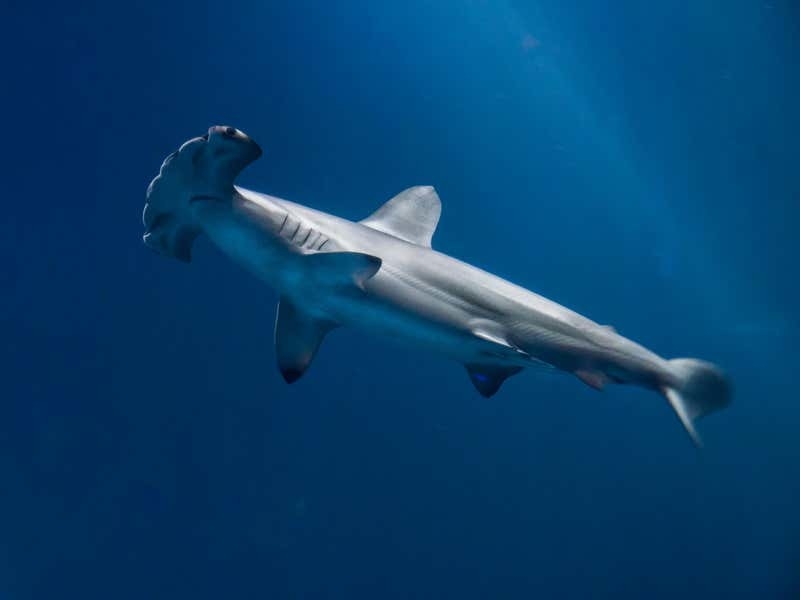Hammerhead sharks hold their breath as they hunt in deep, cold waters, in order to maintain their body temperature, a new study suggests.
According to the research, previously unobserved and unexpected behaviour, which has broad similarities to breath-holding thermoregulation strategies employed by marine mammals, may be widespread among other deep-diving sharks and fishes.
Like most fishes, sharks are fully ectothermic (cold-blooded), and their body temperatures are largely regulated by their immediate environment.
However, this can be a challenge for large predatory fish who need certain body temperatures to function yet venture into colder, deeper waters to find prey.
Here water temperatures can get as low as 4C as they hunt for prey.
Because of their make up, and the way their blood vessel network is structured to actively conserve body heat, it is unknown how these sharks can maintain body temperature during deep, near frigid dives.
To explore this mystery, Mark Royer at the Hawaii Institute of Marine Biology, University of Hawaii, and colleagues developed state-of-the-art implants that were placed in adult sharks, that measured depth, ambient water temperature, activity rates, body movements and internal body temperature.
They found the sharks maintained an elevated body temperature (up to 20C above ambient temperatures), throughout the deepest portion of each dive and only rapidly began to lose heat on their return to the surface.
According to the scientists, the sharks maintain their body heat by effectively holding their breath while diving.
The animals could minimise the loss of body heat due to breathing cold water, by closing their mouths and/or gill slits tightly to reduce the flow of cold water across the gill.
However, the researchers note that further research is needed to confirm the thermoregulation strategy.
Writing in the Science journal, the researchers said: “There are distinct physiological differences between scalloped hammerhead sharks and high-performance fishes.
“The latter maintain warm muscles and sensory organs during dives, but they are nevertheless affected by reductions in heart function because the heart is supplied by cold blood flowing from the gills.
“By reducing convective heat loss at the gills, scalloped hammerhead sharks maintain both muscle and heart temperature, thereby possibly preserving cardiac function during deep dives.”
“Given the effectiveness of breath holding and the strong selective forces that shape behavioural and physiological thermoregulation, this strategy could be widespread among other epipelagic and teleost fishes,” write Mark Meekan and Adrian Gleiss in a related perspective.






